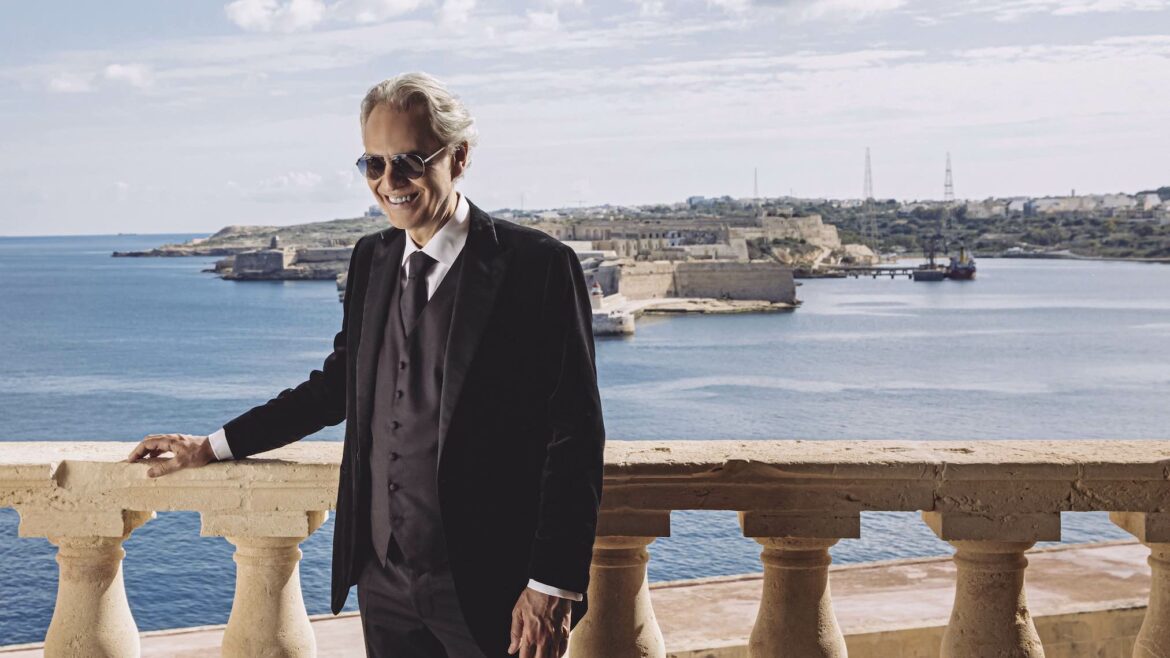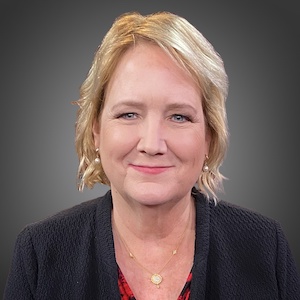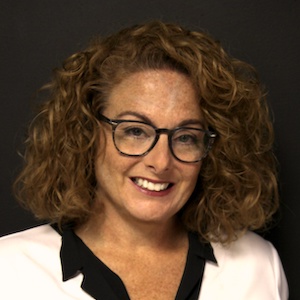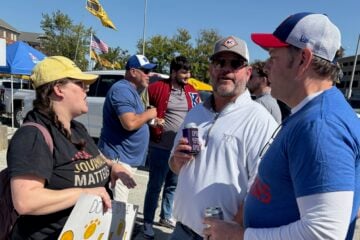Public TV fundraisers weigh future of on-air pledge as shift to streaming accelerates

Luca Rossetti
Andrea Bocelli in a 2021 "Great Performances" special.
Public television fundraising leaders are looking for ways to reverse the disappointing performance of stations’ March pledge drives and have found no magic solutions.
An analysis by Contributor Development Partnership of March pledge results reported a 24% decline in the number of gifts year-over-year, a nearly 5.5% drop in the number of new donors and a 7.5% slide in the percentage of sustainer gifts. CDP’s analysis was compiled from about 40 stations that participate in its Member Services Bureau; their membership files represent under one-third of all public TV donors, according to Daren Winckel, senior director of fundraising strategy.

“You can see the pattern here. There’s less overall participation and some of the really key groups that traditionally participate, you’re seeing less of that,” Winckel said. Fundraisers for stations in four different geographical regions said separately that their pledge revenue from March was either flat or decreased year-over-year and was sometimes down compared to 2019 and 2020. PBS compiled aggregate data on more stations but declined to share its findings.
Some of the contributing factors to the drive’s downer results are linked to factors outside of public media’s control, according to Winckel and fundraising leaders from PBS and stations. While the COVID-19 pandemic helped increase broadcast viewership and pledge revenue for many stations in 2020 and 2021, those gains appear to be diminishing rapidly as people spend less time watching live TV in favor of streaming. These experts also speculated that viewers are curtailing their donations to stations due to economic factors or directing their charitable gifts to Ukrainian relief programs.
The March drive also suffered from a shortage of new programs. During pandemic lockdowns, production of some pledge programs had to be suspended, said Jerry Liwanag, PBS VP of fundraising programming. He expects new shows to go into production as COVID safety restrictions are lifted. Yet he acknowledged wider concerns about how changes in audience behavior will affect pledge drives in the near and distant future.
Winckel described the underperformance of the March drive as a sign of what’s to come. “We are on a trend line. We might see situational occurrences where there’s particularly good, robust content that is offered up through pledge that catches fire for a minute and we get some good results off of that,” he said, but “the continued trend line is going to be on this glide path downward.”
Audiences for linear television have declined sharply as viewers increasingly turned to digital streaming and subscription video on-demand services. Public TV’s prime-time audience of older viewers has been slower to embrace streaming, but the shift to nonlinear TV is approaching a tipping point. A PBS audience analysis released last year projected that the proportion of all viewers streaming nonlinear TV during prime time would surpass audiences of live TV by fall 2022.

PBS Passport, the streaming service for station donors, has buoyed stations’ fundraising by converting viewers to members for annual donations of at least $60 or monthly sustainer gifts of $5. But stations are beginning to experience the limits of sustainer programs built on Passport membership. “You have a declining broadcast audience that’s shrinking the pool, and if you’ve already converted 47% of them into sustainers who give monthly in perpetuity, that limits how much additional giving they’re going to give by campaign,” Liwanag said, citing internal figures.
Winckel echoed Liwanag’s analysis, noting that Passport’s popularity means that some public TV members watch Passport exclusively and may not see many, if any, pledge programs.
Against this backdrop, public TV fundraisers are wrestling with decisions about their next moves. Should their stations invest more in efforts to shore up on-air pledge, or lean more into online fundraising? Can both be done simultaneously?
Liwanag, Winckel and station leaders believe that the broadcast audience and on-air pledge drives are still important sources of revenue, despite the changes in viewers’ habits.
“I hate this rhetoric that goes around every once in a while that ‘pledge is dead,’” said Maura Daly Phinney, VP of membership and on-air fundraising for the Public Media Group of Southern California. “It may be declining, but it’s still a very robust revenue source. I think it’s dangerous when people discount it.”
Fewer gifts from sustainers
PBS SoCal and KCET in Los Angeles, which merged in 2018 and are now part of the Public Media Group of Southern California, raise around $3 million annually from pledge-related fundraising, according to Phinney. A significant portion of the revenue comes from March pledge drives, she said.

The stations raised about $923,000 in March 2020 and improved on that a year later to bring in approximately $944,000. But this March, pledge revenue dropped 29% to around $670,000.
“We had a war that started the first weekend of pledge,” Phinney said. “I think people were super distracted, worried and giving money to Ukrainian charities, which they should be.” She noted that broadcast viewership was low during that period. Pledge revenue declines follow a larger trend of decreasing broadcast viewership that predates the pandemic, she added.
Phinney is looking ahead to production of new pledge programs, especially shows that offer events and tours as thank-you gifts, which are especially lucrative in California. Before the pandemic, the Los Angeles stations’ pledge drives featured “tons of ticket offers,” she said. “In any one drive we might have six or seven shows where we’re offering tickets.” Within the past year, the only ticket offer attached to a pledge show was Andrea Bocelli performing an outdoor concert at the Hollywood Bowl in October.
Phinney sees the growth of sustainer giving as another challenge. “Fifty percent of the people who give us money are already monthly sustainers,” she said. “They’ll see a pledge drive and be like ‘Yeah, I’m already doing my part.’” Some sustainers make additional gifts during pledge, “but when you take out 50% of your donors who are already there for you every month, you’re obviously going to see a decline. We’ve been seeing that for five years.”
Passport and pledge
Winckel recommended that stations make up for pledge-drive declines by emphasizing online fundraising while diversifying their revenue sources.
“Passport is a big part of that,” Winckel said. “We’re telling stations to really double down on Passport promotion, and when you get those donors to keep them actively engaged and streaming.” CDP clients have been able to bring on “incredible new numbers of donors” around binging opportunities and high-profile premieres from Masterpiece and other series. “Those really help and make a difference,” he said.
“Passport gives and continues to give a huge boost to us,” said Alice Webber, director of development for PBS Utah. “It’s one of the main reasons we get new members.” Passport revenue has helped the station weather declines from pledge, she said.
Passport has proven itself as a reliable audience builder and incentive for membership, but it does have its downsides. About 50% of Passport donors are sustaining members, and stations’ oldest and most loyal viewers are increasingly using it, according to Winckel. Annual gifts from Passport members average about half the amounts contributed by donors to pledge programs, he said.
Scott Marchildon, VP and chief development officer for Maine Public, cautioned against stations treating Passport as just another revenue-generating streaming service. His concern is that viewers and donors will come to see it as a subscription-video streaming service and that perception will make them more likely to cancel their monthly donations if programs don’t meet their expectations. To him, it’s important that donors see Passport as a member benefit that supports a key local nonprofit.

Barbara Shipley, executive director of development and marketing for East Tennessee PBS, said the March drive at her station brought in a total of $66,000 in donations from 450 pledges, a four-year low for total revenue and a drop of 29% from the March 2021 drive.
Shipley is among the station fundraisers who want PBS to give stations new options for monetizing Passport. She’s advocating for stations to be able to sell local underwriting for national programs on the streaming service. At present, they can sell local underwriting for their own programs.
“As more and more people go to digital streaming, we could substantially compensate for down pledge if we were able to sell underwriting locally on to national programming,” Shipley said. “But our hands are tied and we’re not able to. … I’m really concerned about that.”
Marchildon of Maine Public supports the idea. “For our underwriters in particular, they are disappointed that they can’t offer that digital property to our underwriting supporters,” he said. “Streaming will overtake live TV watching … so that’s something that PBS has to solve.”
CDP’s Winckel sees another opportunity for localization. If stations produce and present more of their own original local programs on Passport, viewers and donors would be better able to recognize the value of their services to their community. But, of course, presenting new original programs requires financial support from members.






The pledge drive programing was lack luster and we switched to videos instead, awaiting the return of regular favorite programs.
Multiple reasons your revenue is dropping
1) Premiums taking too long for delivery
2) People don’t have CD players any longer
3) Lack of seeing what’s playing for the evening without having to log in to website
4) Stop selling all the programs everywhere – Costco, Prime, other retail outlets it’s not exclusive any longer.
It is now 2025 and the PBS pledge gifts are still CDs smdespite the fact that fewer and fewer people use physical product anymore to play content. So these gifts are worth nothing to more and more people. PBS should instead offer private links online to their contents.
I just realized that my local PBS station started what I believe is the fourth pledge drive of 2022 (August), all of which are two excruciating weeks long. Do you really think that people are going to sit and watch the dreadful programming on the air during those? Can’t you come up with something better than quacks, pseudo scientists and has-been performers? Aging Backwards? Really? Suze Orman for the millionth time? If Dante was alive today, these pledge drives would qualify for another circle in Hell.
I could not have said it better, Marguerite. I totally avoid PBS during the pledge drives, even though it is my main TV source the rest of the time. Several of my friends agree, and I have actually cut my donation in half for the last three years.
I am a monthly subscriber at an amount which is a lot for me. I only watch PBS and PBS Plus and also believe Public Television is a must have for our country. BUT, I just watch the News hour on passport or YouTube during your too frequent and deadly fund drives. You need some better advice on finding funding sources.
The fund drives are really awful. And go on forever. Makes me question why I am a monthly donor.
I agree about what a turnoff the endless parade of quacks and pseudoscientists has been through the decades, from John Bradshaw to Deepak Chopra. I used to love the idea of public TV but the quacks have been chronically antithetical to it. Integrity is your most important asset. Maybe just broadcast fewer hours, and mostly create great programs that can also be sold to streaming outlets.
So I turn on our local PBS station (Milwaukee MPTV) and there’s another fundraising effort going on. They just had one in early August, and another 2 weeks later?
And agree, the programming during these fundraisers is terrible. “Medical” and futurist quacks, Orman, reruns of concerts featuring musical artists who had their heyday 30 or more years ago. Lawrence Welk for pete’s sake!! What demographic watches that? My parents watched that in the 50’s and 60’s–they are deceased. And the “local” programming is just a bunch of social grievance stuff, and I can’t imagine any minorities choosing to watch that over some streaming movie/series. Or Ticktok videos. They’d be better off just broadcasting a test signal.
I agree with most of the comments expressed here, especially the endless trotting out of Suze Orman, the seemingly limitless supply of purveyors of snake oil medicine, 60’s rock n’ roll performances dredged up from the ancient past (and assumed to be what all boomers are nostalgic for), and yes, “a bunch of social grievance stuff”, or what can be called re education camp programming for those who don’t think like ‘us’. Last but not least, the quality of Masterpiece has taken a dive (the PC mediocrity of the latest offering, Tom Jones, becomes even more apparent if viewers are familiar with Tony Richardson’s deliciously exuberant, comic and bawdy 1962 film adaptation of Henry Fielding’s novel of 18th century manners. I used to check the pbs/kqed website each week to see if there was anything of interest to view, because if you missed the tv livestream the program would still be available for a time before it went to PBS Passport. But alas, one day that option disappeared. All I found was a webpage byzantine in its ability to deter anyone from navigating it (except for Passport programing). So my go to source for movies and tv series is my local public library. And it’s all free! And, I might add, the censors, either from the right or the left, are nowhere in sight.
I could not have said it better, Marguerite. I totally avoid PBS during the pledge drives, even though it is my main TV source the rest of the time. Several of my friends agree, and I have actually cut my donation in half for the last three years.
The only time I do NOT watch PBS is during their boring long fund drives. Why two weeks and several times per year? Programming that adds no value as a member and seem to be from comments above heading in the wrong direction of encouraging new members or donations from current members.. As a former fundraiser, life long viewer who appreciates PBS I find their fundraising antiquated, they need a fresh approach. I would actually give money to avoid the lackluster fund drive programming that goes on for way too long.
I had and would continue to collect for PBS but it has gotten arrogant in becoming a propaganda network and declines in new NOVA and other history, science., and educational as well as entertainment shows. It now emphasized to the extreme a rigid line of thinking and cultural propaganda that has destroyed its true self-assigned educational mission. It takes money from one set of people to serve another rather than maintain a general informative level that aligns with thd needs of hood citizenship and s as itech as well as arts and history education. Almost anything appearing on PBS stations is neither educational nor informative but rather occult propaganda. If the PNS managers were moved by devotion the issue might be open for discussion. However. In light of the occult taste and culture imposed on PBS broadcasting, we can now turn to utube videos that are much more variable, informative, and, as a whole, serve to inform you rather than impose the pseudo-culture of people imposing freakiness and obtuse cultures that most people disdain. PBS therefore does not deserve public money nor tax exemption of contributions unless it returns to its original mission rather than Hollis propaganda. All it had to do is be what it used to be and I’ll be out there gathering funds for a truly EDUCATIONAL PBS as in the past! I deeply believe in public education, meaningful dialogue, and responsible debate. Give us a broad spectrum instead a the crappy preaching to which we are so annoyed with these days. We must educate, not propagandize!
The mistake made several years ago to to de-emphasize the local stations during pledge drives was massive and unforgivable. New Yorkers would rather donate to Channel 13 than to “this PBS station”. An error so boneheaded it defies the imagination.
I agree. I used to live in the Boston area and volunteered for the WGBH, Channel 2 auction there. I went in to the studio to work in the data center. I now live in South Florida. There’s nothing down here equivalent to the spirit generated by that auction.
The FM, NPR station here uses their staff for on-air pledge drives, and it makes a difference.
I am a life long PBS viewer and would always donate but the way they are pushing passport leaves a bad taste in my mouth. Many viewers can’t afford the $60 a year to access it and as someone above mentioned you used to be able to catch up on missed episodes online but now they lock them behind passport 2 weeks after airing. If the made passport available to low income viewers via their library card or offered a discount based on income I could look at it as simply fund raising tool instead of an expensive version of acorn .And I agree the quality of some programs are awful.Why are you showing a mediocre French hospital soap opera from 2000 during prime time? Put that on mid day as an alternative to the myriad of yoga for old folks shows. (And I say this as an old myself) Is that really all you can afford to air? Pbs used to offer Criterion collection films and quality plays, local arts programs and thought provoking science shows that were not dumbed down to 6th grade level understanding. Don’t get me wrong there is a place for simple science shows but we also need more complex content for when the kids outgrow Nova or Nature. PBS seems so afraid to offend with their line up it does a disservice to its viewers. For many (and this was true for my family growing up) PBS is really the only source for quality arts and entertainment. Keep the standards high,lose the paywall,get rid of the snake oil salesmen on during pledge time and more people would be willing to step up and donate